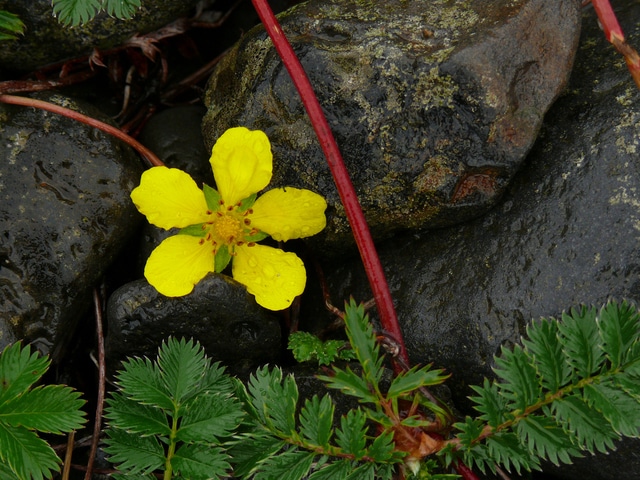Commonly known as cinquefoil, potentilla is an easy-to-grow flowering shrub that lights up the summer and fall garden with bright yellow, white, pink or red buttercup flowers that can be seen from a distance. The showy blooms are a welcome sight in the garden when many other blooms have faded.
Cinquefoil is a hardy, deciduous shrub that tolerates freezing temperatures, so it can be grown in a wide variety of climates. The plant grows 1 to 4 feet tall and 2 to 4 feet wide. Potentilla is also a nectar and larval source for various species of butterflies, including the Grizzled Skipper, Cinquefoil Skipper, which feeds exclusively on cinquefoil, and the Emperor Moth. Deer don’t like to eat potentilla.
Potentilla are versatile in the garden. They can be used in flower beds, rock gardens and even as foundation plantings or groundcover. Cinquefoil also make excellent container plants.
To have luck growing cinquefoil in your garden, keep the following growing tips in mind.
Choose the ideal planting location. Potentilla grows and flowers in full sun to part-shade. Cinquefoil will bloom the best in full sun, but the brilliant flower color will fade more slowly in a part-shade location. Plant cinquefoil in an area that receives at least 6 hours of sun a day. If planting in a part-sun location, locate the plant in an area with morning sun and afternoon shade.
Plant in containers. Cinquefoil makes an excellent potted plant. Plant in an organic potting soil in a glazed ceramic or plastic pot.

(Anja Ranneberg/FreeImages.com)
Provide good drainage. Potentilla prefers well-draining soil, although they will tolerate wet feet occasionally. The best soil for potentilla is loam, but they also adapt to clay and sandy soil. Once established, potentilla can also tolerate drought.
Water regularly. Though cinquefoil can tolerate some drought, it does best with regular watering. Water ground plants when the first two inches of soil has dried out. Water container plants when the first inch of soil has become dry.
Fertilize occasionally. The ideal time to feed cinquefoil is in late February, again in early June and after the first flowering in midsummer. Fertilize with an organic fertilizer designed for flowering plants, such as a rose food.
Prune. Trim potentilla in early spring to shape and after the first flowers of summer finish blooming. This second pruning will cause the shrub to flower again. Prune back by one-eighth to one-quarter only and never more than one-third, or you could damage the plant.
Cut and enjoy. Potentilla make attractive flowers for arrangements. The cut blooms will last several days in water.
Julie Bawden-Davis is a garden writer and master gardener, who since 1985 has written for publications such as Organic Gardening, Wildflower, Better Homes and Gardens and The Los Angeles Times. She is the author of seven books, including Reader’s Digest Flower Gardening, Fairy Gardening, The Strawberry Story, and Indoor Gardening the Organic Way, and is the founder of HealthyHouseplants.com.

